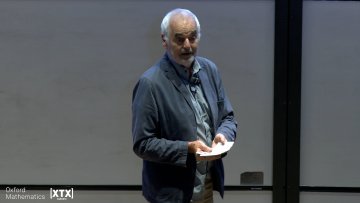Let X be a n by n unitary matrix, drawn at random according to the Haar measure on U_n, and let m be a natural number. What can be said about the distribution of X^m and its eigenvalues?
The density of the distribution \tau_m of X^m can be written as a linear combination of irreducible characters of U_n, where the coefficients are the Fourier coefficients of \tau_m. In their seminal work, Diaconis and Shahshahani have shown that for any fixed m, the sequence (tr(X),tr(X^2),...,tr(X^m)) converges, as n goes to infinity, to m independent complex normal random variables (suitably normalized). This can be seen as a statement about the low-dimensional Fourier coefficients of \tau_m.
In this talk, I will focus on high-dimensional spectral information about \tau_m. For example:
(a) Can one give sharp estimates on the rate of decay of its Fourier coefficients?
(b) For which values of p, is the density of \tau_m L^p-integrable?
Using works of Rains about the distribution of X^m, we will see how Item (a) is equivalent to a branching problem in the representation theory of certain compact homogeneous spaces, and how (b) is equivalent to a geometric problem about the singularities of certain varieties called (Weyl) hyperplane arrangements.
Based on joint works with Julia Gordon and Yotam Hendel and with Nir Avni and Michael Larsen.


